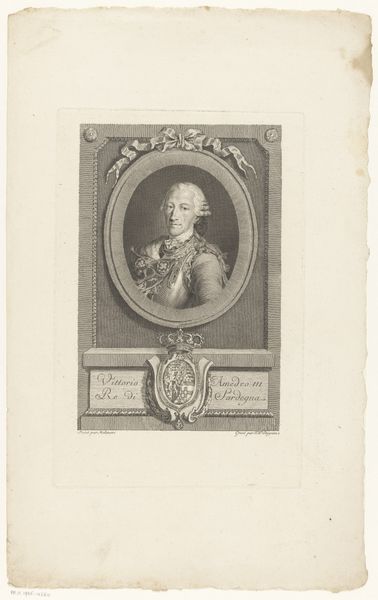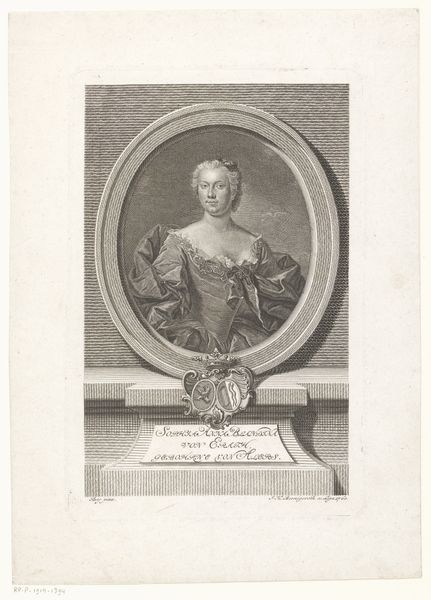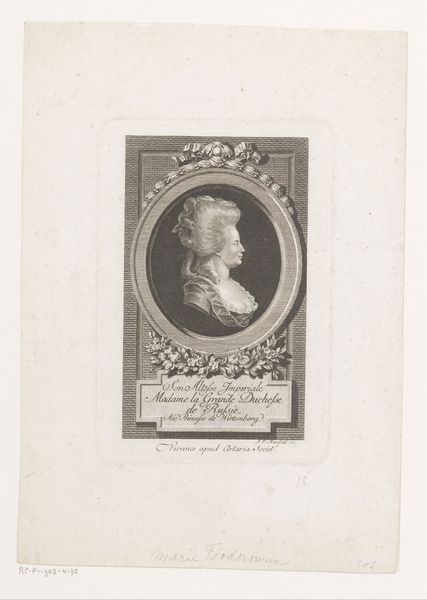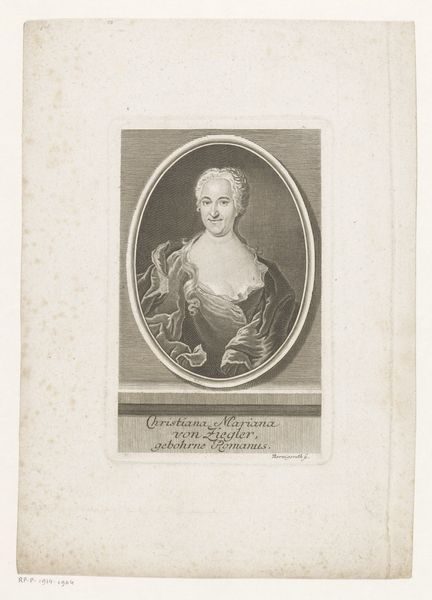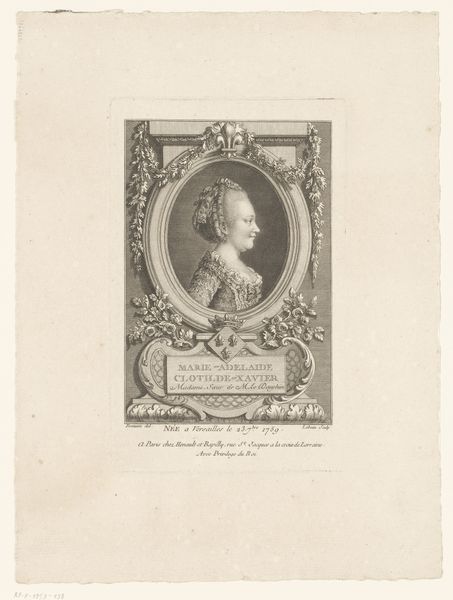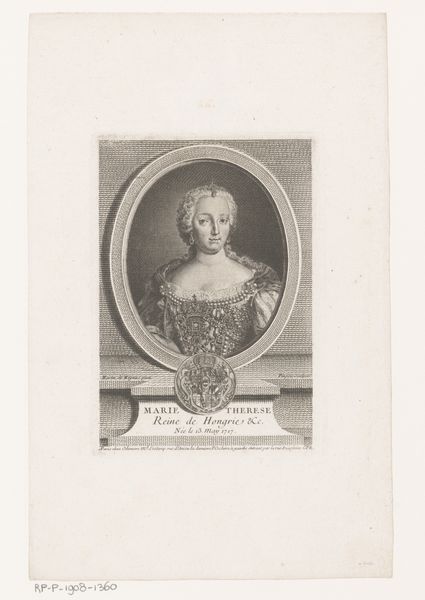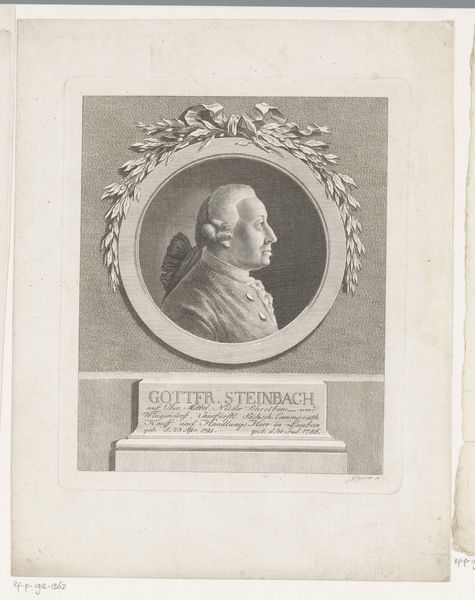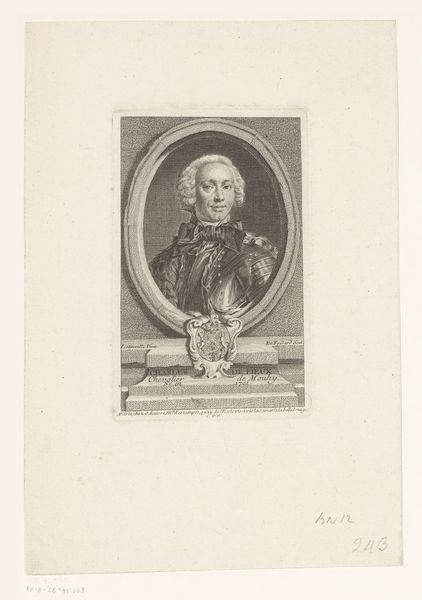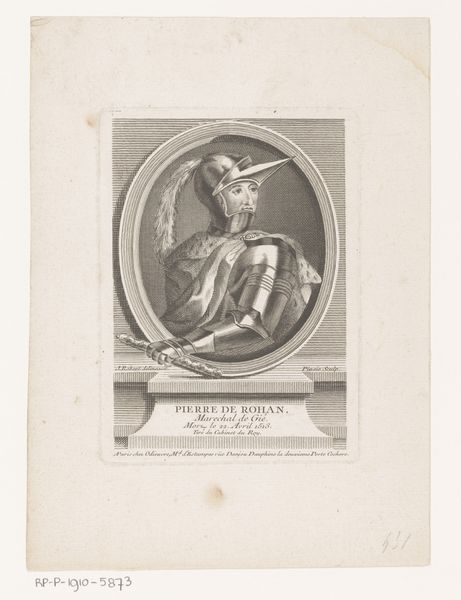
engraving
#
portrait
#
pencil drawn
#
charcoal drawing
#
history-painting
#
engraving
#
rococo
Dimensions: height 151 mm, width 105 mm
Copyright: Rijks Museum: Open Domain
Editor: This is a rather elegant engraving, "Portret van Maria Theresia van Bourbon" by Sébastien Pinssio, dating roughly from 1755 to 1765. It's striking how contained the figure feels within the oval frame and architectural pedestal. How do you read the symbolism in a portrait like this? Curator: It's fascinating, isn't it? The oval frame itself evokes a sense of preciousness, of an object to be treasured and kept – it echoes a desire for posterity. Look at how Maria Theresa is elevated upon that small pedestal – literally raising her status, turning her into an icon, a symbolic figure rather than simply a person. It locks her into cultural memory. What emotional weight do you think that bears, considering the inscription stating when she died at Versailles? Editor: That's powerful. It's almost as if the portrait anticipates and seeks to defy mortality through iconic representation, which is underscored by the pedestal looking like a gravestone. Do you see other symbols that are important? Curator: Definitely. The Rococo style itself, with its emphasis on ornamentation and delicacy, speaks to the values of the French court – an era of refinement and grace, even in the face of political unrest and decline. Every piece of lace, every pearl, signals membership in a very select social class – and beyond that, they speak to aspirations and values, don't you think? Values beyond what’s strictly visible in her features. Editor: It really brings another level of understanding to consider these symbols as carriers of meaning over time. Thank you. Curator: My pleasure. I will also be contemplating those aspirations for days.
Comments
No comments
Be the first to comment and join the conversation on the ultimate creative platform.
